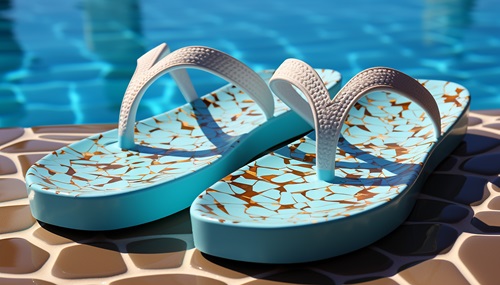
In the last issue of the SDM Blitz, we heard the awful news that drownings are on the rise, a consequence of the heat wave that is driving many, including those without swimming skills, to enter swimming pools and beaches before and after the hours they are supervised.
A lifeguard shortage is making the problem worse and forcing many pools and beaches to curtail their hours – making them targets for those who want to take a dip illegally.
The good news here? Big advances in artificial intelligence are helping address the situation. And for once, A.I., though mightily vilified in other regards, is emerging as a hero. Even better news: Multiple platforms are popping up, allowing venues, as well as coastal destinations, to find something that fits their needs.
Some platforms, like MYLO, send a text alert to the venue manager if someone enters the pool area. It also sends an alarm if someone appears to be in distress. (Drowning does not, contrary to popular belief, look like a person waving their arms above their head and screaming. In most cases, the person is below the surface of the water, making distinctive motions that do not propel them to the surface.)
And that’s where A.I. comes in, according to the companies making the platforms. The software is sophisticated enough to recognize the difference between a person who is simply splashing around, and one who is drowning.
“It has the eyes of the lifeguard,” Jonathan Jacobovitz, the spokesperson for Coral Smart Pool, the company that sells the product, told an NBC affiliate in Miami. “It has the brains of a lifeguard.”
 MYLO uses an underwater camera, as well as sensors around the pool area.
MYLO uses an underwater camera, as well as sensors around the pool area.
Another brand on the market, Lifeguard, also uses a camera to track those in the water, although this one uses a camera mounted on a post outside the pool.
In England, extensive coverage has been afforded to a platform known as Lynxight.
Keith Evans, Director of Safety & Risk at Places Leisure, told the Royal Lifesaving Society, “It’s important that we remain at the forefront of technology. People expect lifeguards to see everything; it’s a huge pressure on them. This new system observes people’s patterns and behaviors and alerts lifeguards via a smartwatch to behaviors that signal distress. It means our lifeguards can more quickly assess situations and react appropriately. By providing more support for our lifeguard team, we ensure another layer of safety for our customers.”
And, he adds, it’s easy to install.
“Conventional pool safety systems require underwater cameras, but a warranty on the pool tank at Tewkesbury prevented us from drilling into the side of the pool. The Lynxight system uses standard CCTV cameras. Unlike other systems, it is not affected by glare or turbidity and provides lifeguards with a view of what’s happening above and below the water, including what’s outside their line of sight,” says Evans.
While many A.I. water safety platforms were originally designed for home pool use, others can track swimmers in larger commercial or municipal pools, and even in the ocean. One of those, SightBit, consists of a management platform that analyzes video feed from waterfront (or poolside) cameras to detect and alert risks and hazards, according to the company’s website. The data is analyzed by AI algorithms in real time.
Interestingly, SightBit can identify and track multiple people on the water and at the shoreline, and can even recognize devices like boats, jetskis and rafts. Even cooler: It can detect pollution in the water and predict where it will spread.
The Sightbit system uses cameras on the shore, which gather data and read the water conditions. The AI is able to analyze wave movements and detect any risky areas for swimmers, and anyone on the water.
“Most drownings are actually because of water conditions, like the waves and the rip currents,” Israeli businessman Adam Bismut, who developed the system, told NoCamels. Bismut, who saw a man lose his life by drowning at the Dead Sea because help was too far away, became determined to try to prevent further drownings in large bodies of water where not enough lifeguards could be present.
 Many systems also have night-mode operations, making them particularly valuable to help guard against those who want to sneak in after hours.
Many systems also have night-mode operations, making them particularly valuable to help guard against those who want to sneak in after hours.
Of course, no system is a substitute for live guards who are giving the water direct supervision (although they do a good job of providing supplemental support to those guarding the pool) – and nothing replaces a high fence around, or locked doors on, a pool after hours.
But as the heatwave and nationwide lifeguard shortage grind on, and as states have an increasingly difficult time implementing Learn-to-Swim laws, A.I. may indeed be the wave of water safety's future.

